
Industrial manufacturing company Ingersoll Rand (NYSE:IR) reported Q2 CY2025 results topping the market’s revenue expectations, with sales up 4.6% year on year to $1.89 billion. Its non-GAAP profit of $0.80 per share was in line with analysts’ consensus estimates.
Is now the time to buy Ingersoll Rand? Find out by accessing our full research report, it’s free.
Ingersoll Rand (IR) Q2 CY2025 Highlights:
- Revenue: $1.89 billion vs analyst estimates of $1.84 billion (4.6% year-on-year growth, 2.4% beat)
- Adjusted EPS: $0.80 vs analyst estimates of $0.80 (in line)
- Adjusted EBITDA: $509.4 million vs analyst estimates of $505.2 million (27% margin, 0.8% beat)
- Management raised its full-year Adjusted EPS guidance to $3.40 at the midpoint, a 1.8% increase
- EBITDA guidance for the full year is $2.13 billion at the midpoint, above analyst estimates of $2.1 billion
- Operating Margin: 4%, down from 15.1% in the same quarter last year
- Free Cash Flow Margin: 11.1%, down from 15.7% in the same quarter last year
- Organic Revenue fell 3.4% year on year (1% in the same quarter last year)
- Market Capitalization: $34.15 billion
“We delivered another strong quarter, with momentum reflected in our first half organic orders growth, robust book-to-bill ratio, and raised guidance on revenue, Adjusted EBITDA, and Adjusted EPS,” said Vicente Reynal, chairman and chief executive officer of Ingersoll Rand.
Company Overview
Started with the invention of the steam drill, Ingersoll Rand (NYSE:IR) provides mission-critical air, gas, liquid, and solid flow creation solutions.
Revenue Growth
A company’s long-term performance is an indicator of its overall quality. Even a bad business can shine for one or two quarters, but a top-tier one grows for years. Regrettably, Ingersoll Rand’s sales grew at a tepid 5.6% compounded annual growth rate over the last five years. This wasn’t a great result compared to the rest of the industrials sector, but there are still things to like about Ingersoll Rand.
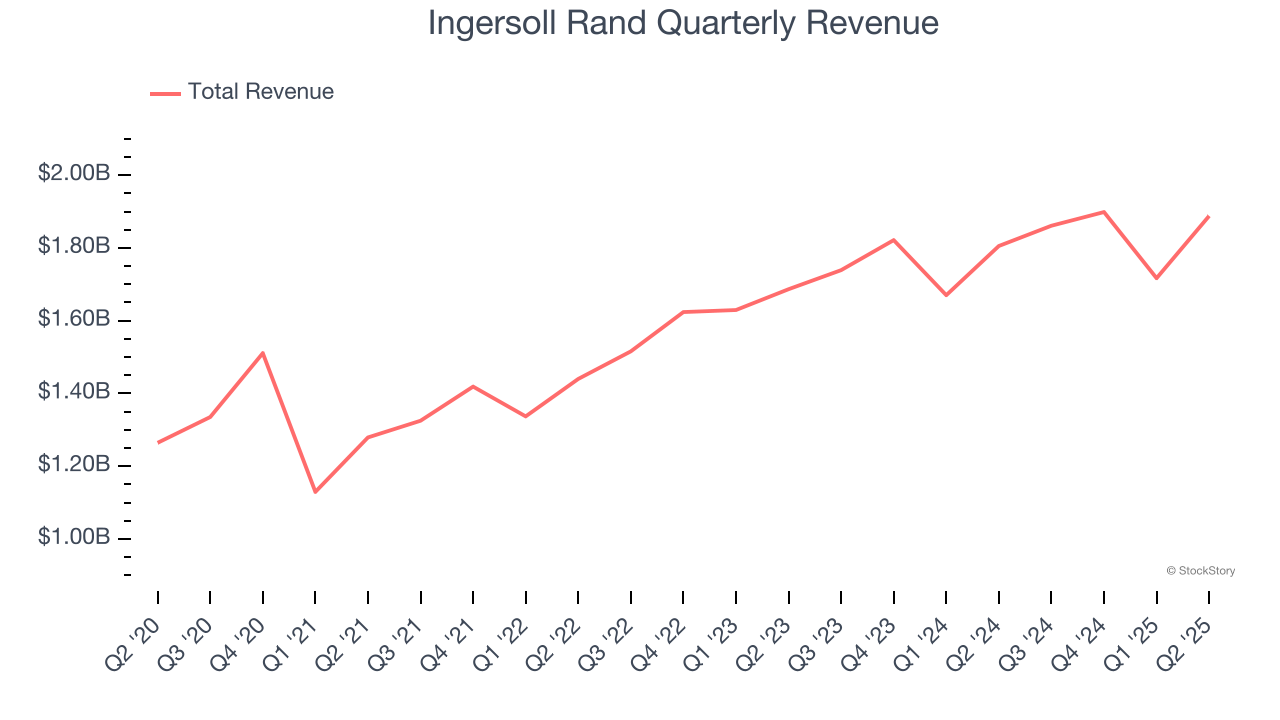
Long-term growth is the most important, but within industrials, a half-decade historical view may miss new industry trends or demand cycles. Ingersoll Rand’s annualized revenue growth of 6.8% over the last two years is above its five-year trend, but we were still disappointed by the results. 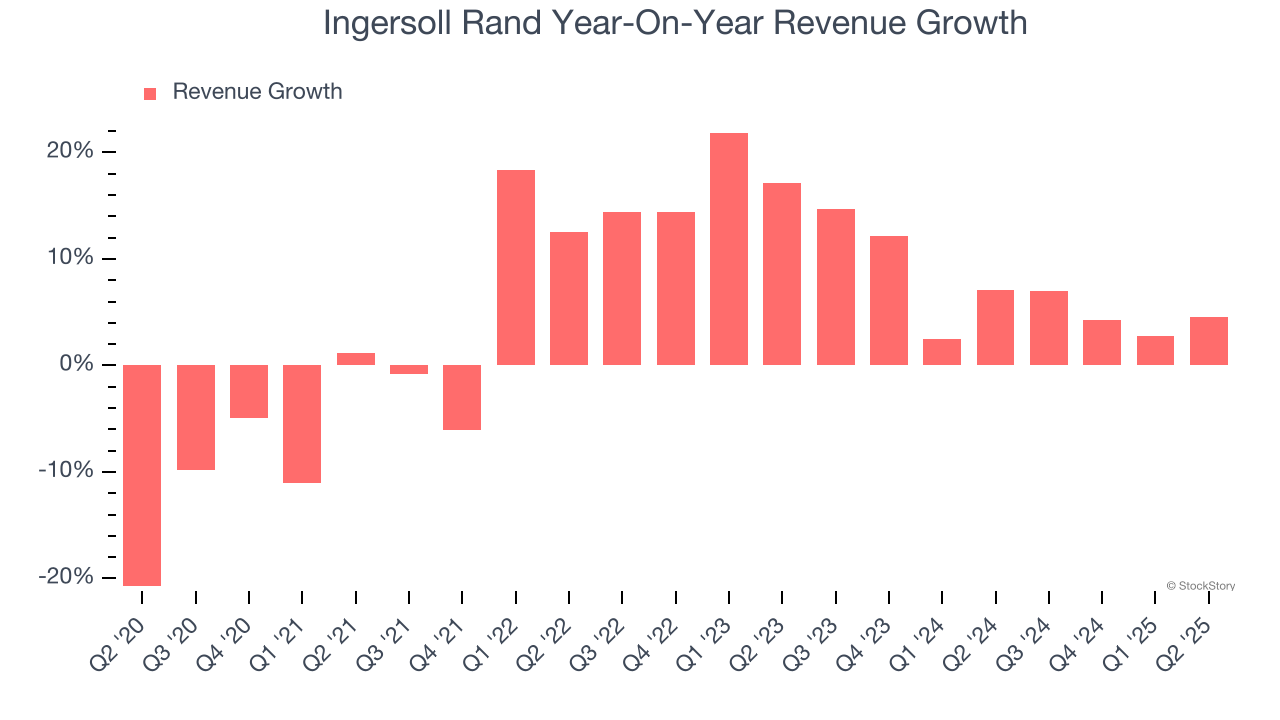
We can better understand the company’s sales dynamics by analyzing its organic revenue, which strips out one-time events like acquisitions and currency fluctuations that don’t accurately reflect its fundamentals. Over the last two years, Ingersoll Rand’s organic revenue was flat. Because this number is lower than its two-year revenue growth, we can see that some mixture of acquisitions and foreign exchange rates boosted its headline results. 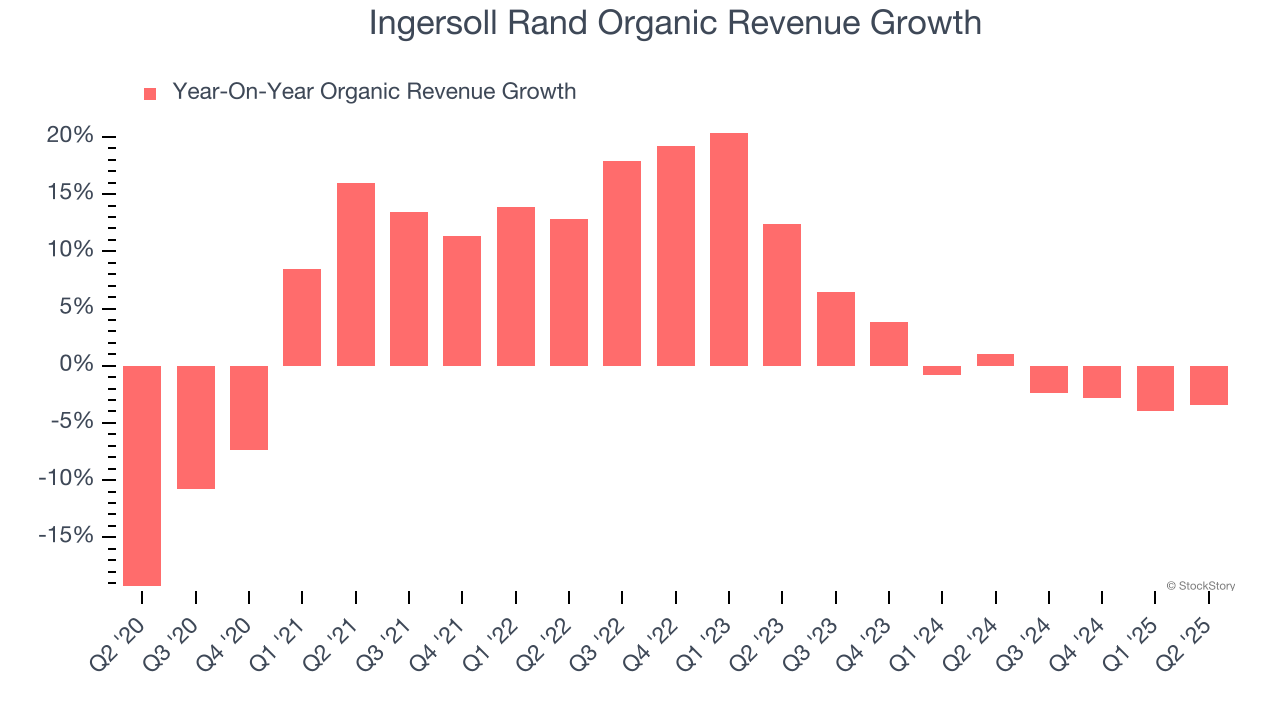
This quarter, Ingersoll Rand reported modest year-on-year revenue growth of 4.6% but beat Wall Street’s estimates by 2.4%.
Looking ahead, sell-side analysts expect revenue to grow 5.3% over the next 12 months, similar to its two-year rate. This projection is underwhelming and indicates its products and services will see some demand headwinds. At least the company is tracking well in other measures of financial health.
Software is eating the world and there is virtually no industry left that has been untouched by it. That drives increasing demand for tools helping software developers do their jobs, whether it be monitoring critical cloud infrastructure, integrating audio and video functionality, or ensuring smooth content streaming. Click here to access a free report on our 3 favorite stocks to play this generational megatrend.
Operating Margin
Ingersoll Rand has been an efficient company over the last five years. It was one of the more profitable businesses in the industrials sector, boasting an average operating margin of 13.9%. This result isn’t surprising as its high gross margin gives it a favorable starting point.
Analyzing the trend in its profitability, Ingersoll Rand’s operating margin rose by 6.7 percentage points over the last five years, as its sales growth gave it operating leverage.
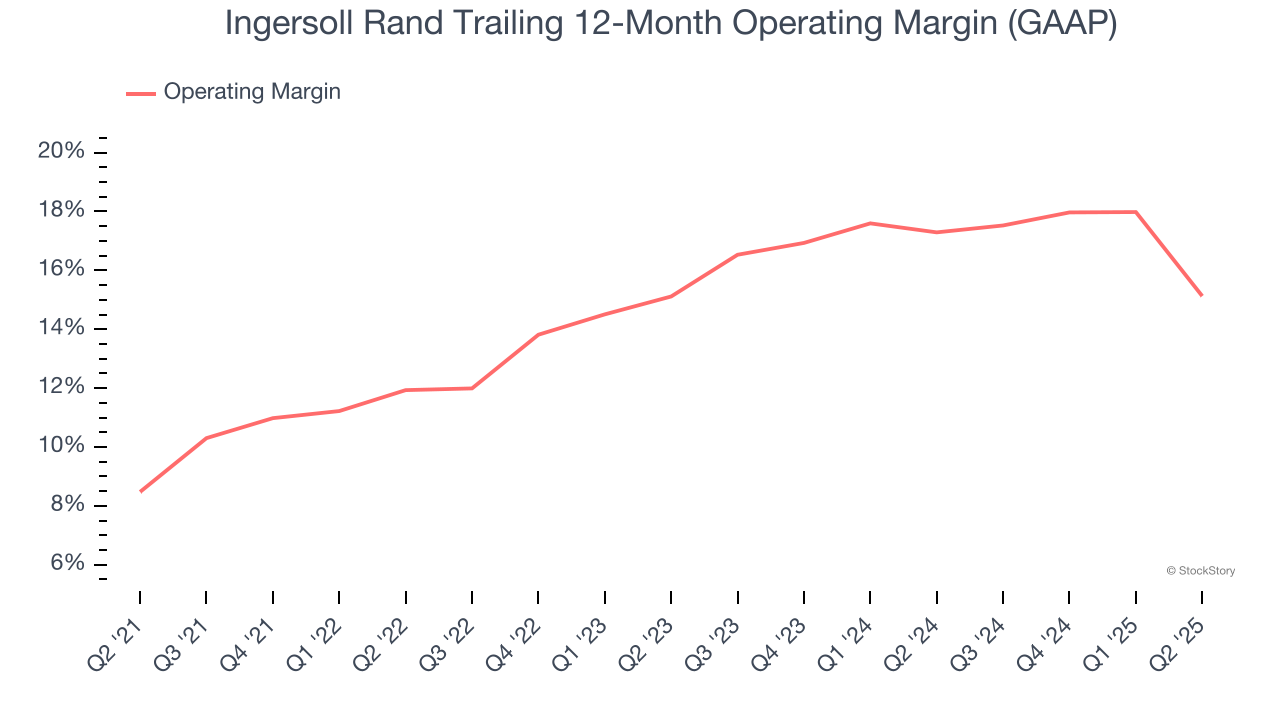
In Q2, Ingersoll Rand generated an operating margin profit margin of 4%, down 11 percentage points year on year. Since Ingersoll Rand’s operating margin decreased more than its gross margin, we can assume it was less efficient because expenses such as marketing, R&D, and administrative overhead increased.
Earnings Per Share
Revenue trends explain a company’s historical growth, but the long-term change in earnings per share (EPS) points to the profitability of that growth – for example, a company could inflate its sales through excessive spending on advertising and promotions.
Ingersoll Rand’s EPS grew at an astounding 19% compounded annual growth rate over the last five years, higher than its 5.6% annualized revenue growth. This tells us the company became more profitable on a per-share basis as it expanded.
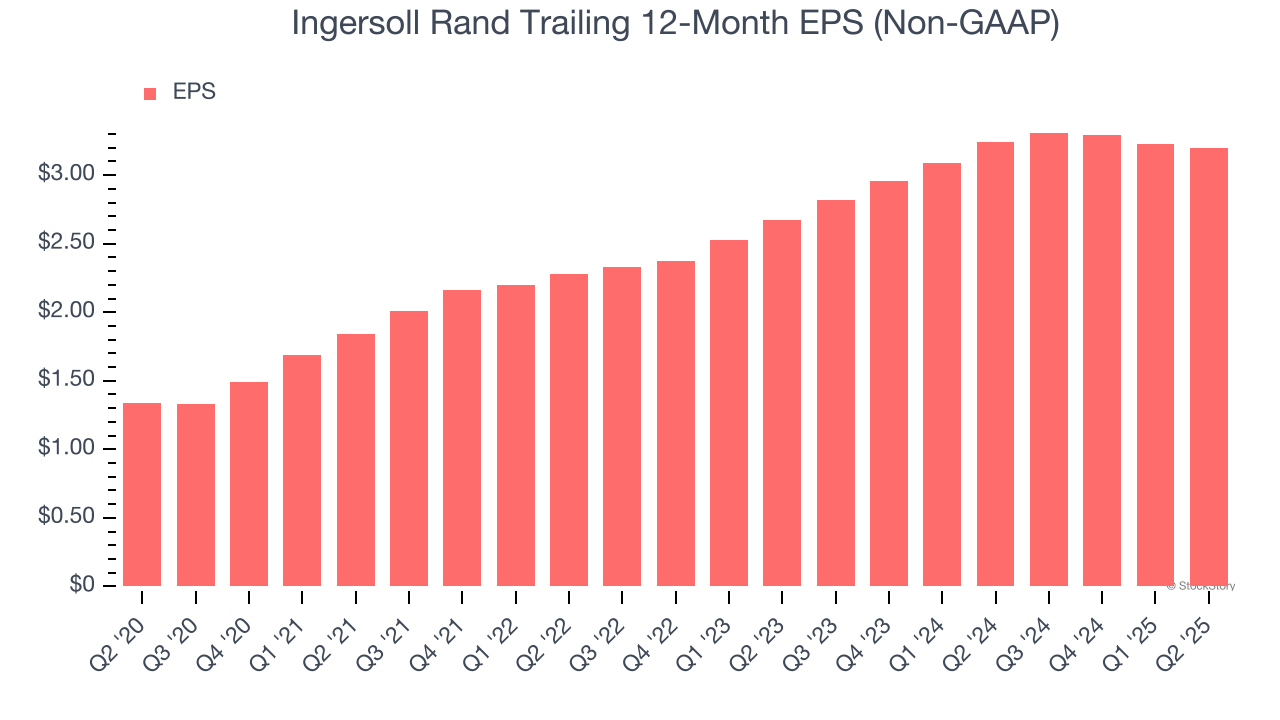
We can take a deeper look into Ingersoll Rand’s earnings quality to better understand the drivers of its performance. As we mentioned earlier, Ingersoll Rand’s operating margin declined this quarter but expanded by 6.7 percentage points over the last five years. This was the most relevant factor (aside from the revenue impact) behind its higher earnings; interest expenses and taxes can also affect EPS but don’t tell us as much about a company’s fundamentals.
Like with revenue, we analyze EPS over a more recent period because it can provide insight into an emerging theme or development for the business.
For Ingersoll Rand, its two-year annual EPS growth of 9.5% was lower than its five-year trend. This wasn’t great, but at least the company was successful in other measures of financial health.
In Q2, Ingersoll Rand reported adjusted EPS at $0.80, down from $0.83 in the same quarter last year. This print was close to analysts’ estimates. Over the next 12 months, Wall Street expects Ingersoll Rand’s full-year EPS of $3.20 to grow 10%.
Key Takeaways from Ingersoll Rand’s Q2 Results
We enjoyed seeing Ingersoll Rand beat analysts’ revenue expectations this quarter. We were also glad its full-year EBITDA guidance slightly exceeded Wall Street’s estimates. Overall, this print had some key positives. The stock remained flat at $84.63 immediately after reporting.
So do we think Ingersoll Rand is an attractive buy at the current price? The latest quarter does matter, but not nearly as much as longer-term fundamentals and valuation, when deciding if the stock is a buy. We cover that in our actionable full research report which you can read here, it’s free.
